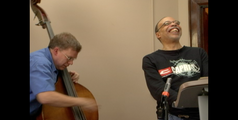Truth in the Telling: Procedure, Testimony, and the Work of Improvisation in Legal Narrative
Benjamin Authers
Published: 2010-05-01
This article considers how trial procedures legitimate certain narratives, and certain ways of producing narrative. Through procedural constraints that promulgate legal aesthetics and legal rights, legal procedures articulate norms for human behaviour. Law's forms, then, determine law's content, with significant connotations for the broader culture. Notable amongst these narrative forms is legal testimony, whose apparently improvised, interrogative creation imbues it with especial qualities as a representation of truth. Spontaneously performed in and effected by the valorised space of the courtroom, testimony reflects the cultural pervasiveness of law's aesthetics, and underscores how narratives of truth are constituted by, and dependent upon, the privileged forms of their production.
Available Files
-
Procedure_Testimony_and_the_Work_of_Improvisation_in_Legal_Narrative.pdf
Download


